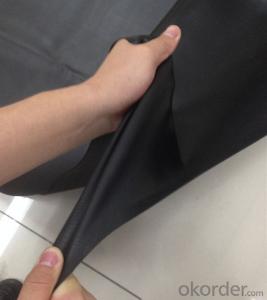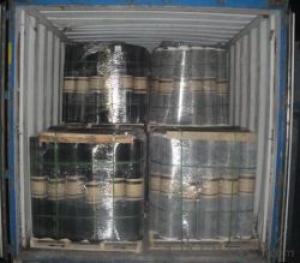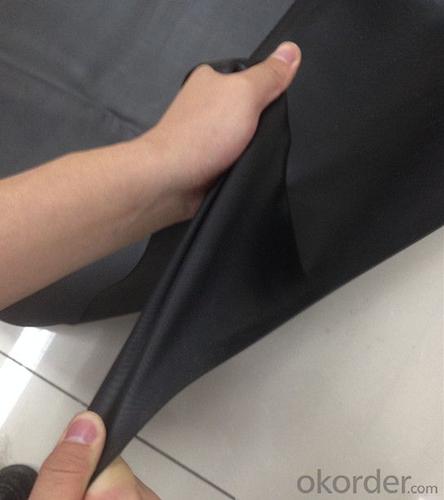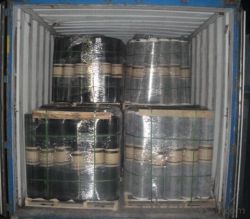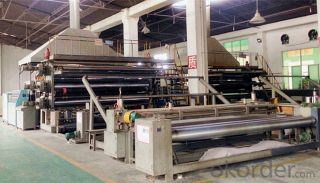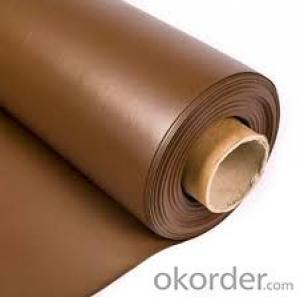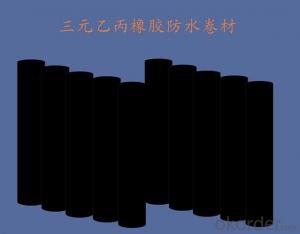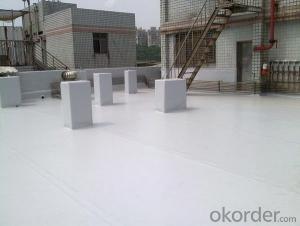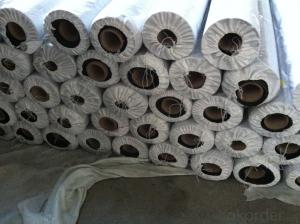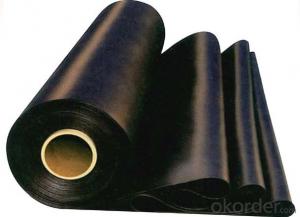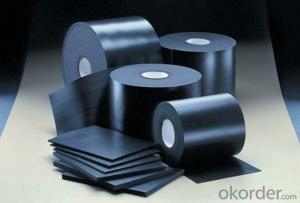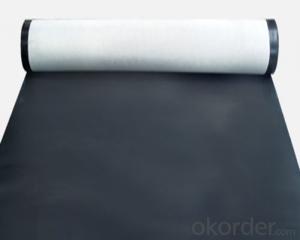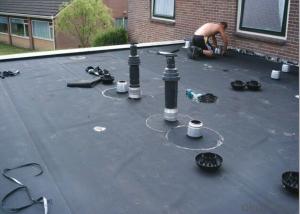Vulcanized EPDM Rubber Roofing with CE certifaction
- Loading Port:
- Qingdao
- Payment Terms:
- TT or LC
- Min Order Qty:
- 3000 m²
- Supply Capability:
- 250000 m²/month
OKorder Service Pledge
OKorder Financial Service
You Might Also Like
Black Vulcanized EPDM Rubber Waterproof Roofing System
Product Instruction of Black Vulcanized EPDM Rubber Waterproof Membrane:
Durability and ease of installation are two of the key reasons . Single ply EPDM Roof systems are becoming commonplace in today flat roofing market. EPDM membrane is a flexible rubber material available in 45 mil, 60 mil and 90 mil thicknesses. With its superior flexibility, resistance to fire and high strength, EPDM can be applied in all sorts of climates.
1. EPDM waterproof membrane is made from ternary ethylene-propylene rubber, which is for waterproofing of exposed and non-exposed applications.
2. CNBM EPDM waterproof membrane production adopts the world-advanced equipment of cold feeding extrusion and continuous vulcanization technology.
3. EPDM waterproof membrane is of high elasticity among high polymer waterproof materials and a world-popular waterproofing material.
Product Features of Black Vulcanized EPDM Rubber Waterproof Membrane:
-Excellent weather-ability, durability and size stability
-Good adaptability to high and low temperature, UV resistant and anti-corrosion
-High tensile strength and good elongation, accommodating to structure movement
-Easy installation, solid joint, and mo environmental pollution
-Good rooting penetration resistance
-Service life up to 50 years
Applications of Black Vulcanized EPDM Rubber Waterproof Membrane:
-Roof, basement, tunnel, pond liner, dam
-Industrial and civil building waterproofing
-Geosynthetic liner for fish ponds, swimming pools, channels, irrigation system
-Especially suitable for projects with high requirement in durability, anti-corrosion and deformation
Specifications of Black Vulcanized EPDM Rubber Waterproof Membrane:
-Width of roll: 1.2m, 2m, 4m
-Length of roll: 20m, 30m or customized
-Thickness of membrane: 1.2mm, 1.5mm, 2mm
-Type: vulcanized EPDM or welding EPDM
-Application: roof, basement, pond, lake, swimming pool, steel structure roofing, underground, tunnel, etc
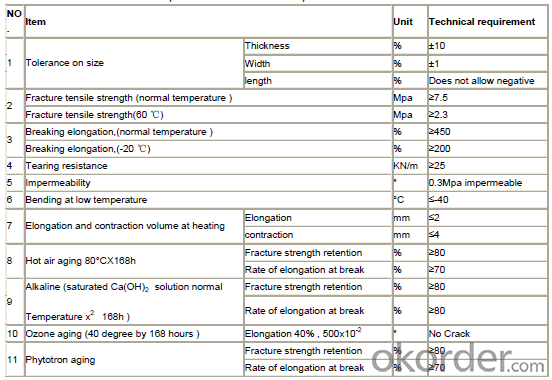
FAQ:
1. Is your EPDM waterproof membrane the real rubber?
Yes, our EPDM membrane is made from top quality rubber, which is imported from America. We support samples for testing, or testing in our factory.
2. How's your products quality?
Our EPDM is with the top quality at home and abroad. Our quality is much higher than Chinese standard. Our product is widely used in Chinese Central government projects. And it's also accpted by customers all over the world, such as EU, USA, Astrulia, etc.
3. What's the service life of your EPDM membrane?
The service life of our EPDM membrane is more than 50 years.
4.What's your MOQ?
Our MOQ is 3000M2.
5. What's your product ability of EPDM membrane?
We own the largest EPDM production line in China. Our product ability of EPDM membrane reaches 2 million square meter per year.
Photos of Black Vulcanized EPDM Rubber Waterproof Membrane:
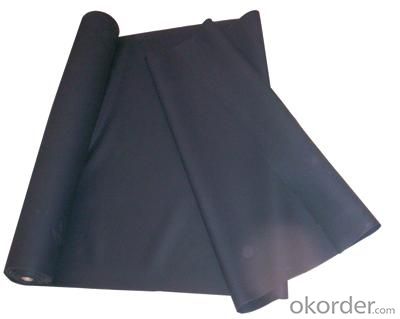
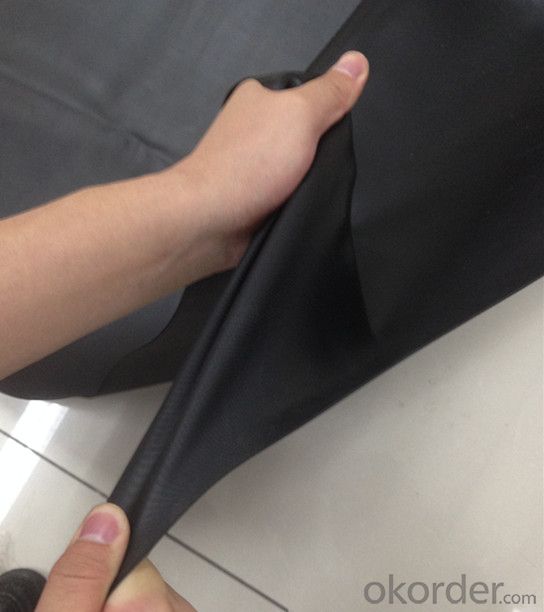
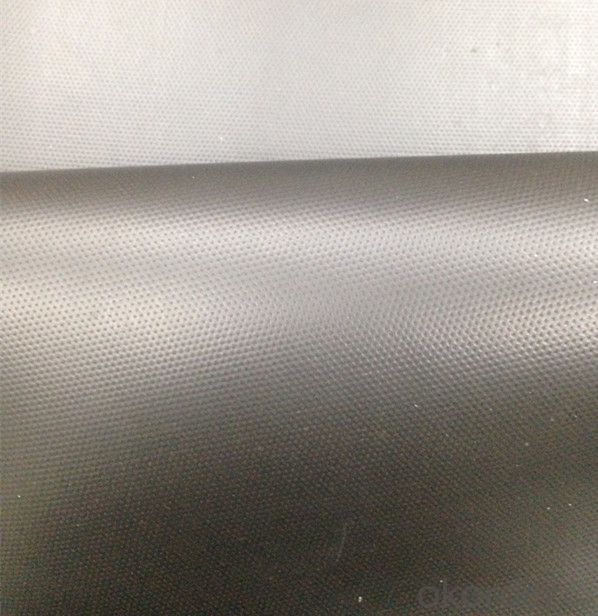
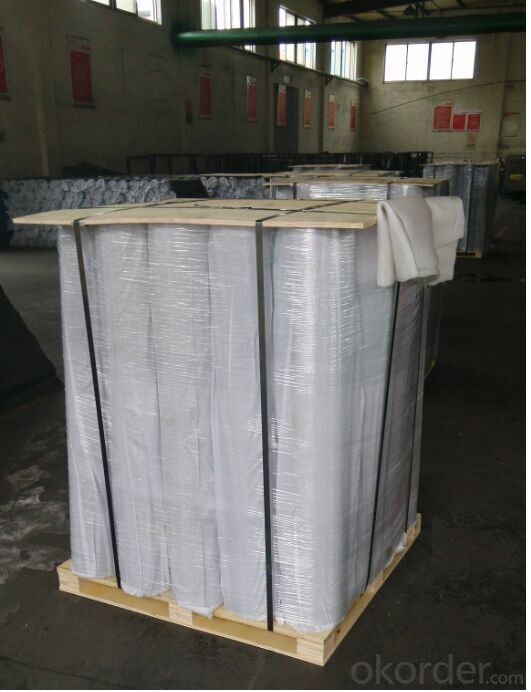
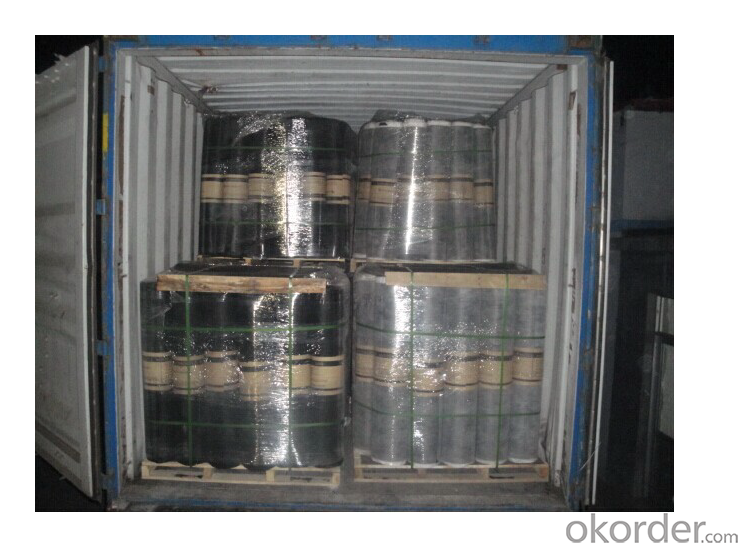
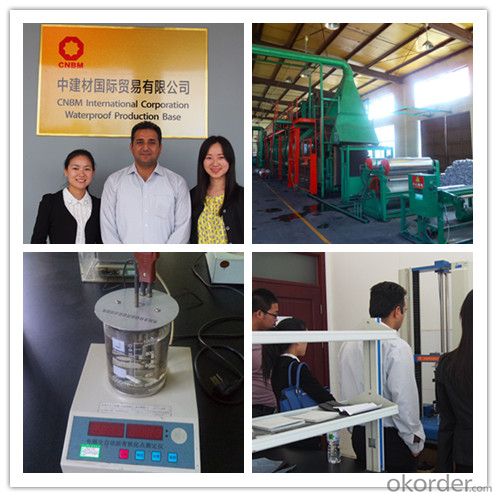
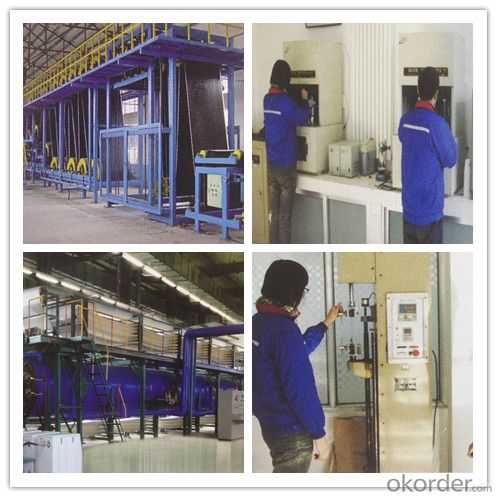
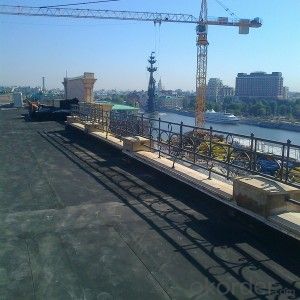
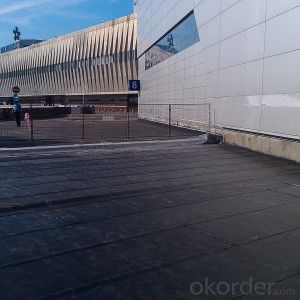
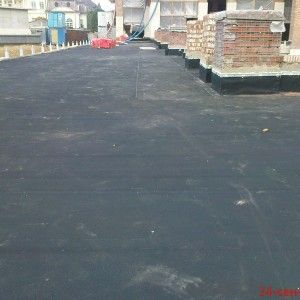
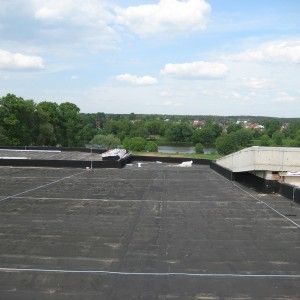
- Q: Is a waterproofing membrane resistant to hydrocarbons or oil spills?
- Typically, a waterproofing membrane exhibits resistance against hydrocarbons and oil spills. Its primary purpose is to create a barrier that prevents water penetration and protects the underlying surfaces from moisture damage. These membranes are commonly made from materials such as modified bitumen, polyurethane, or PVC, all of which possess excellent chemical resistance, including towards hydrocarbons and oil. This resistance guarantees that the membrane remains intact and effective even when exposed to substances like oil spills or hydrocarbon-based liquids. However, it is crucial to note that the specific resistance may vary depending on the type and quality of the selected waterproofing membrane. Therefore, it is essential to choose a membrane that is specifically engineered to withstand the intended environment and potential chemical exposures.
- Q: BS waterproofing membrane is modified? There are not a few thick drawings, how to do
- Do not indicate the thickness can contact the design unit, you can also judge according to the waterproof level
- Q: Can a waterproofing membrane be used in shower pans?
- Yes, a waterproofing membrane can be used in shower pans. In fact, it is highly recommended to use a waterproofing membrane in shower pans to prevent water leakage and damage to the underlying structure.
- Q: Can waterproofing membranes be used on concrete block walls?
- Concrete block walls can indeed benefit from the use of waterproofing membranes. It is actually quite common and highly advised to employ such membranes on concrete block walls in order to ward off water infiltration and potential moisture-related harm. These membranes are specifically engineered to establish a barrier against water and can be effectively applied to either the exterior or interior surface of the concrete block walls. In doing so, they furnish an added layer of safeguarding, thereby preventing moisture from penetrating the walls and causing issues such as the growth of mold, efflorescence, and the deterioration of the concrete blocks themselves. By opting for the utilization of waterproofing membranes, you can effectively ensure the long-lasting resilience and durability of your concrete block walls.
- Q: Can waterproofing membranes be used on swimming pool decks?
- Yes, waterproofing membranes can be used on swimming pool decks to protect them from water damage and leaks.
- Q: Can waterproofing membranes be used in wet areas like bathrooms?
- Yes, waterproofing membranes can be used in wet areas like bathrooms. These membranes are specifically designed to create a barrier against moisture and prevent water from seeping into the underlying surfaces. Applying waterproofing membranes in bathrooms is a common practice to protect the structural integrity of the space and prevent any water damage.
- Q: Can a waterproofing membrane be applied to curved surfaces?
- Yes, a waterproofing membrane can be applied to curved surfaces. Waterproofing membranes are designed to be flexible and can conform to various shapes and contours, including curved surfaces. This allows for effective waterproofing of both flat and curved areas, providing protection against water infiltration.
- Q: Can a waterproofing membrane be used on rubber surfaces?
- Yes, a waterproofing membrane can be used on rubber surfaces. Waterproofing membranes are designed to create a barrier that prevents water from penetrating and damaging the underlying surface. Rubber surfaces, such as roofs, decks, or even rubber flooring, can benefit from the application of a waterproofing membrane to protect them from water damage. The membrane is typically applied as a liquid or a sheet, and it adheres to the rubber surface, forming a protective layer that prevents water from seeping through. This can help to extend the lifespan of the rubber surface and prevent issues such as leaks or decay caused by moisture. However, it is important to ensure that the waterproofing membrane is compatible with rubber and the specific type of rubber surface being treated, as some membranes may not adhere properly or may cause damage to certain types of rubber. It is always recommended to consult with a professional or the manufacturer of the waterproofing membrane to ensure proper application and compatibility.
- Q: Are waterproofing membranes resistant to hydrostatic pressure?
- Yes, waterproofing membranes are designed to be resistant to hydrostatic pressure.
- Q: Can waterproofing membranes be used on wood surfaces?
- Yes, waterproofing membranes can be used on wood surfaces. Waterproofing membranes are versatile and can be applied to various materials, including wood. They provide a protective barrier that prevents water from penetrating the wood, helping to prolong its lifespan and prevent damage caused by moisture.
Send your message to us
Vulcanized EPDM Rubber Roofing with CE certifaction
- Loading Port:
- Qingdao
- Payment Terms:
- TT or LC
- Min Order Qty:
- 3000 m²
- Supply Capability:
- 250000 m²/month
OKorder Service Pledge
OKorder Financial Service
Similar products
Hot products
Hot Searches
Related keywords
